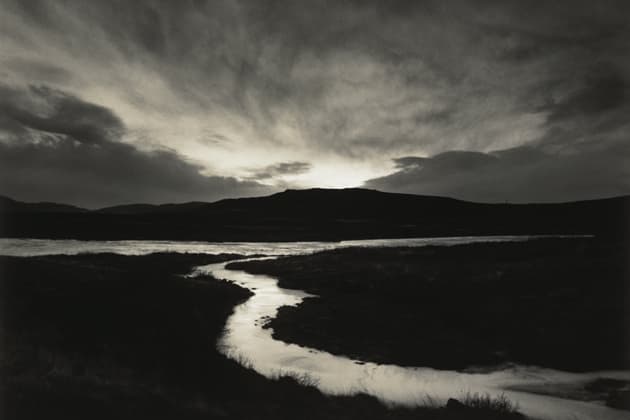I've always wanted to give lith printing a go. Maybe when I finally install my enlarger... 


Thanks Hiroh for the reply. You haven't said so in as many words but as far as I know the former MG IV paper was only RC so I assume that yours is RC?
Sorry to be a nuisance but this kind of "excessive over attention"on my part to names is brought about by the fact that I was probably careless in my own use of the the word MGIV where for instance I might refer to MG IV Warmtone whereas in fact the official Ilford name was called MG RC Warmtone with no mention of IV
I looked at Bob Carnie's lith video and was expecting the paper to appear much more "pinkish" His was Ilford WT FB paper but like your examples there was barely a hint of pink He did go to say that once lithed as he had done for the video, one of his lith printers went on to tone the paper and that finishing touch made all the difference So with Ilford paper it appears that a second stage may be needed
In all the examples I have seen where Moersch lith was used there is much more of a change to the paper but as you used Moersch lith on Ilford paper with what seemed a símilar outcome it may be that what I associate with lith from Moersch examples even his lith only gives this pinkish effect with other now defunct papers
pentaxuser

Multigrade V RC Deluxe, with the Pearl surface (previously known as 44), is a decent (if not perfect) approximation to air-dried glossy FB. Definitely not as yucky as glossy RC.On top of that, it felt like I was holding a piece of plastic. The emulsion was very shiny and reflective, almost metallic—really yucky! I’m not sure if there are other RC papers that feel more like FB papers, but if they’re all like this one, I’m sure I’ll never touch another RC paper again
Multigrade V RC Deluxe, with the Pearl surface (previously known as 44), is a decent (if not perfect) approximation to air-dried glossy FB. Definitely not as yucky as glossy RC.
Multigrade V RC Deluxe, with the Pearl surface (previously known as 44), is a decent (if not perfect) approximation to air-dried glossy FB. Definitely not as yucky as glossy RC.

Not long ago a friend of mine did lith printing for the first time using Foma Retrobrom and had those snowballs covering the print, until he washed paper for 60 sec in a 3% hydrogen peroxide solution (got this idea somewhere here in photrio) before developing.Both MG WT prints have these blotches, which I read somewhere are called “snowballs.”
Interesting remedy. I wonder how it works to prevent the snowball effect?Not long ago a friend of mine did lith printing for the first time using Foma Retrobrom and had those snowballs covering the print, until he washed paper for 60 sec in a 3% hydrogen peroxide solution (got this idea somewhere here in photrio) before developing.
Interesting remedy. I wonder how it works to prevent the snowball effect?
I have some old papers, and I have a set of the Moersh "easy-lith" chemistry.
Any guidance on which negatives to try? Dense, Normal, messed up? I have some from each category
Me too. Here is a link to a photographer who is using old photo papers for Lith printing.
Lith Process & Old Papers – Gavin Lyons Photography
gavinlyons.photography
Dense and high contrast negatives work best in lith for me, though former ones with my stash of lovely WT Oriental and Forte papers make exposure time skyrocket considerably.
I have some old papers, and I have a set of the Moersh "easy-lith" chemistry.
Any guidance on which negatives to try? Dense, Normal, messed up? I have some from each category
Those are very lith-capable papers, good luck!Just got a box 12x16" WT Oriental Seagull VC-FB so I'm looking forward to using it. Recent I got given 10 sheets of Forte - Fortezo Musuem Weight Glossy Tropical 11x14" Glossy FB, quite a curiosity what results will come out of this.
If old and presumably fogged paper can be used do you still get the grey border as you would with normal printing?
Not necessarily, because you don't develop the paper to completion. It's often possible to avoid (excessive) fog when doing lith printing. Of course, at some point, the fog becomes too prominent and it'll interfere even on a lith print. But that point is much further ahead than it is with regular printing.
If you were to take a small piece from a box of paper and test it for fogging is there a shade of grey that is likely to be OK for lith , say for example light to medium grey is likely to be OK but anything beyond that is likely to be a lith problem as well or is "suck it and see" the only way?

 amateurphotographer.com
amateurphotographer.com
| Photrio.com contains affiliate links to products. We may receive a commission for purchases made through these links. To read our full affiliate disclosure statement please click Here. |
PHOTRIO PARTNERS EQUALLY FUNDING OUR COMMUNITY:  |